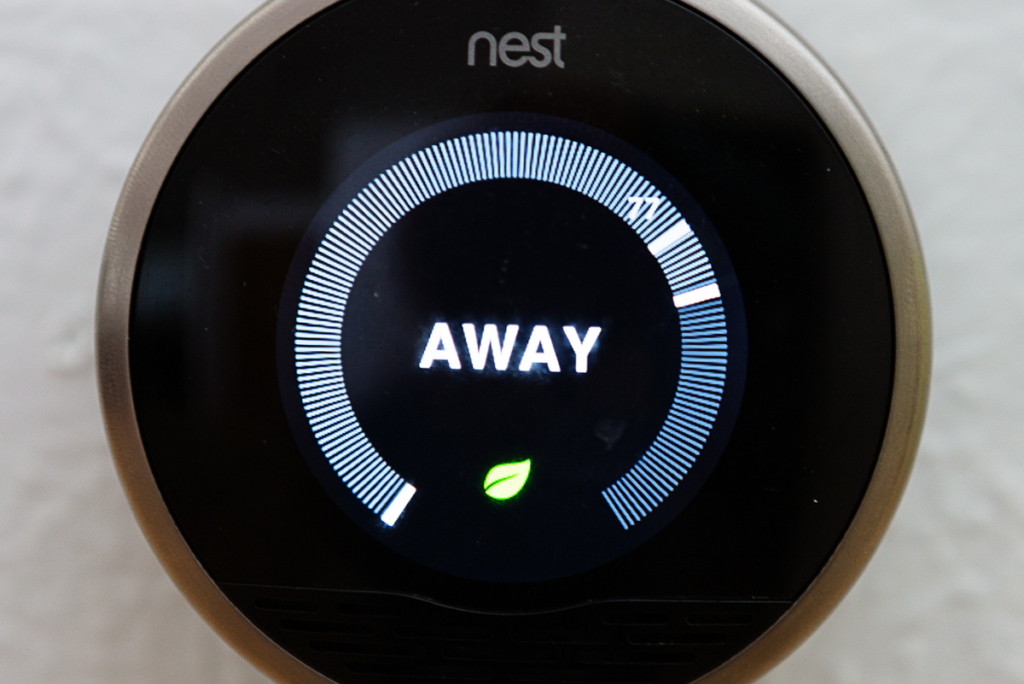Nest Thermostat Battery (Everything You Need to Know)

Are you experiencing Nest Thermostat Battery Issues? Whether it’s constantly disconnecting from Wi-Fi, displaying a low battery warning, or completely shutting down, battery problems can disrupt your home’s comfort and energy efficiency. This comprehensive guide covers everything you need to know about Nest thermostat battery, from types and charging methods to troubleshooting and replacement.
Quick Answer: Nest thermostats use two types of batteries depending on the model. The Nest Learning Thermostat (1st, 2nd, and 3rd gen) and Nest Thermostat E use internal rechargeable lithium-ion batteries that charge via the HVAC system wires or USB when needed. The newer Nest Thermostat uses replaceable AAA alkaline batteries that need to be changed when they run low. Battery issues are often fixed by proper charging, installing a C-wire, or replacing batteries when necessary.
Nest Thermostat Battery Types: Which Model Has Which?
Before diving into battery management, it’s important to understand which battery your specific Nest thermostat model uses:
Internal Rechargeable Batteries (Lithium-Ion)
These models have non-user-replaceable internal batteries:
- Nest Learning Thermostat (1st Generation)
- Nest Learning Thermostat (2nd Generation)
- Nest Learning Thermostat (3rd Generation)
- Nest Thermostat E
Replaceable Batteries (AAA Alkaline)
This model uses standard user-replaceable batteries:
- Nest Thermostat (the mirror-faced model released in 2020)
If you’re unsure which model you have, check our Nest Thermostat Models Comparison guide.
How Nest Thermostat Battery Charge
Understanding how your Nest thermostat receives power is crucial for preventing battery issues.
HVAC System Power (Primary Source)
All Nest thermostat Battery are designed to draw power from your heating and cooling system wires. In an ideal setup, the thermostat receives constant power through these connections:
- R wire: The power wire that provides 24V AC from your HVAC system
- C wire (Common wire): Completes the circuit for constant power flow
Without a C-wire, Nest thermostats use a technology called “power stealing” or “power sharing,” drawing small amounts of electricity from the heating (W) or cooling (Y) wires. While innovative, this approach can sometimes lead to power issues.
USB Charging (Backup for Internal Battery Models)
For Nest Learning Thermostats and Nest Thermostat E with internal batteries:
- When battery levels get low, remove the display from the base
- Connect a USB cable to the port on the back of the thermostat:
- Micro-USB for Nest Thermostat E and 2nd/3rd gen Learning Thermostats
- Mini-USB for 1st gen Learning Thermostat
- Connect to a power source like a computer USB port or wall adapter
- The thermostat will indicate charging with a blinking red light
- Charging typically takes 30 minutes to 2 hours depending on the battery level
Battery Replacement (Nest Thermostat with AAA Batteries)
For the mirror-faced Nest Thermostat:
- Gently pull the thermostat display off the base
- Remove the old AAA batteries from the back of the display
- Insert two new high-quality 1.5V AAA alkaline batteries
- Push the display back onto the base until it clicks
How to Check Nest Thermostat Battery Levels
You can monitor your Nest thermostat’s battery status in several ways:
On the Thermostat Display
For all Nest thermostat models:
- Press the thermostat ring to access the main menu
- Navigate to Settings > Technical Info
- Check the battery voltage display (Voc/Vin/Lin)
Normal voltage ranges should be:
- Voc: 29-42V
- Vin: 28-42V (system off) or 6-7V (system running)
- Lin: 20-40mA
With a C-wire installed, expect:
- Voc: 29-42V
- Vin: 28-42V
- Lin: 100-200mA
For internal battery models, a healthy battery should show at least 3.7V.
Through the Google Home App
For newer Nest thermostat models:
- Open the Google Home app on your smartphone
- Select your Nest thermostat
- Look for the battery status indicator
- The app will notify you when batteries are running low
Nest Thermostat Battery Life: What to Expect
Battery life varies significantly between models and installation setups:
Internal Battery (Learning and E Models)
- With C-wire: Several years of normal operation
- Without C-wire: 1-2 years before potential charging issues
- During power outages: 1-2 hours of basic function (without Wi-Fi)
The internal lithium-ion battery is designed to last the lifetime of the thermostat (typically 5+ years), but its capacity may gradually decrease over time.
AAA Batteries (Mirror-faced Nest Thermostat)
- With C-wire: 1-2 years (batteries are mainly backup)
- Without C-wire: 3-6 months (varies by HVAC system usage)
- During power outages: Several hours of basic function
Using high-quality alkaline batteries from reputable brands will maximize battery life.
Common Nest Thermostat Battery Issues and Solutions
Battery problems are among the most frequent issues Nest thermostat users encounter. Here’s how to diagnose and fix them:
Issue 1: Battery Draining Too Quickly
If your Nest thermostat’s battery depletes faster than expected, try these solutions:
Fix 1: Disconnect from Wi-Fi Temporarily
If your thermostat is constantly searching for a weak Wi-Fi signal, it can drain the battery rapidly. To test if Wi-Fi is the culprit:
- Go to Settings > Reset > Network
- Reset network settings so the thermostat stops searching for Wi-Fi
- Monitor battery levels for 24 hours
- If battery improves, consider improving Wi-Fi signal strength or relocating your router
Fix 2: Check HVAC Wire Connections
Loose wiring can cause power delivery problems:
- Turn off power to your HVAC system at the breaker
- Remove the thermostat display
- Ensure all wires are firmly connected to the appropriate terminals
- Press each connector button and push wires in as far as possible
- Make sure wire ends are properly stripped (about 1/3 inch of exposed wire)
- Reattach the display and restore power
Fix 3: Install a C-Wire or Nest Power Connector
The most reliable solution for battery issues is installing a C-wire:
- Option A: Install a C-wire if your system has an unused wire or you can run a new one
- Option B: Use the Nest Power Connector, a special adapter that creates a C-wire equivalent using existing wires
- Option C: Install a 24V transformer as an alternative power source
While Nest thermostats can operate without a C-wire, installing one provides consistent power and eliminates most battery-related problems. For installation help, consult a professional HVAC technician or Nest Pro installer.
Issue 2: Thermostat Not Charging
If your Nest Learning Thermostat or Nest Thermostat E won’t charge:
Possible Causes and Solutions:
- Disconnected power source:
- Verify the breaker is on for your HVAC system
- Check that all wires are properly connected
- Improper display seating:
- Ensure the display is correctly positioned on the base
- Listen for a click when attaching to confirm proper connection
- USB charging issues:
- Try a different USB cable (ensure correct type for your model)
- Use a different power source (wall adapter instead of computer)
- Look for the blinking red light indicating charging
- Aged battery:
- If your thermostat is several years old, the internal battery may have degraded
- Contact Nest support if the thermostat is under warranty
- For out-of-warranty units, consider a professional battery replacement or a new thermostat
Issue 3: Low Battery Warnings with AAA Batteries
For the mirror-faced Nest Thermostat with replaceable batteries:
- Replace with fresh batteries:
- Use only high-quality 1.5V AAA alkaline batteries
- Avoid rechargeable AAA batteries as they provide less voltage
- Check for battery tab residue:
- During initial setup, ensure the plastic battery tab is completely removed
- Look for any residue on the battery contacts
- Recurring low battery warnings:
- If warnings persist after battery replacement, check for a C-wire
- Consider installing a C-wire or Nest Power Connector
What Happens When Nest Thermostat Battery Gets Low?
When a Nest thermostat’s battery level drops, it goes through a series of power-saving measures:
- Initial warning: You’ll receive a notification on the thermostat and in the app
- Wi-Fi disconnection: The thermostat disconnects from Wi-Fi to conserve power
- Display dimming: The screen dims or turns off completely
- Basic operation: The thermostat enters a “dumb” mode, maintaining basic heating/cooling without smart features
- Complete shutdown: Eventually, if not recharged or batteries not replaced, the thermostat will shut down
During these stages, your HVAC system may continue to run in its last set state until the thermostat completely loses power.
Nest Thermostat Warranty and Battery Replacement
The battery warranty varies by model:
- Nest Learning Thermostats: 2-year battery warranty
- Nest Thermostat E: 1-year battery warranty
- Nest Thermostat (with AAA batteries): 1-year device warranty (batteries not covered)
If you purchase installation from a Nest Pro, you may receive an extended warranty. For internal battery models experiencing issues within the warranty period, contact Google Nest support for warranty service.
Important: Do not attempt to open the back cover of Nest Learning Thermostats or Nest Thermostat E models to replace the internal battery, as this will void your warranty. For out-of-warranty devices, professional battery replacement is recommended.
Conclusion
To ensure your Nest Thermostat operates smoothly and delivers its energy-saving benefits, it’s essential to keep it properly powered. Start by identifying your specific model, as different Nest thermostats use different battery types. For the most consistent performance, consider installing a C-wire or the Nest Power Connector to provide a continuous power supply. Make it a habit to monitor battery levels regularly through the thermostat interface or the Nest app. If your model uses an internal rechargeable battery, be sure to use the correct USB cable when charging is necessary. And for mirror-faced Nest Thermostats that rely on AAA batteries, always opt for high-quality alkaline batteries to maintain long-lasting efficiency.
FAQs about Nest Thermostat Battery
Why is my Nest Thermostat battery not charging?
If your Nest Thermostat battery isn’t charging, it could be due to a few common issues: power supply problems from your HVAC system, a loose wire connection, or a faulty battery. First, check if your system is delivering consistent power and that the wires are properly connected. If your thermostat hasn’t been used for a while, the battery might just need a quick USB charge to wake it up.
How do I troubleshoot my Nest Thermostat?
To troubleshoot your Nest Thermostat, start by checking the battery level. Go to Settings > Technical Info > Power to see if the battery voltage is above 3.7V. If it’s low, plug the device into a USB charger temporarily. You can also reset the thermostat by holding down the display ring for 10 seconds until it restarts. Re-check the wiring if your system still isn’t functioning properly.
How do I fix my Nest Thermostat battery?
Fixing a Nest Thermostat battery typically involves recharging it via USB if it’s drained, ensuring your HVAC system is delivering power, or performing a reset. If your battery is consistently low or doesn’t hold a charge, it may be time to replace it—especially for older models.
How to change Nest battery on 2nd Generation thermostat?
For the 2nd Gen Nest Thermostat, changing the battery involves carefully removing the display from the base and accessing the built-in rechargeable lithium-ion battery. While it’s not officially designed to be user-replaceable, there are third-party kits available. Be cautious if attempting a DIY replacement, or contact support if unsure.
How to change battery on Nest Thermostat 3rd Generation?
The Nest Thermostat 3rd Gen uses an internal rechargeable battery, which is typically powered through your HVAC system’s wires. If it fails to hold a charge, you’ll need to open the display, locate the battery, and replace it with a compatible one. Keep in mind this is a more advanced task, so professional help is recommended unless you’re tech-savvy.
How long does it take to charge a Nest Thermostat with USB?
Charging your Nest Thermostat battery via USB usually takes about 30 minutes to an hour for a quick boost. Use a standard micro-USB cable (for 2nd/3rd gen models) and a wall adapter. Once it has enough power, the thermostat will power on and reconnect to your system.





